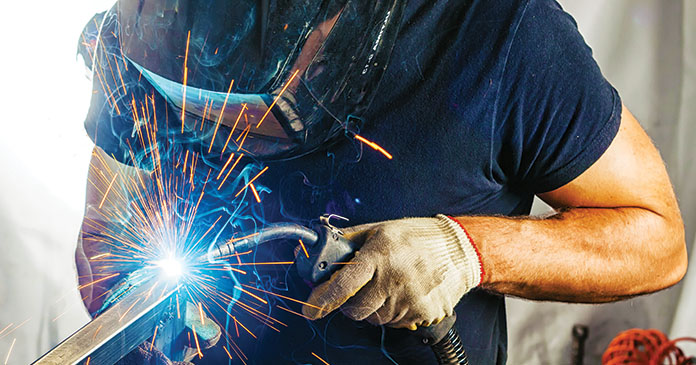The U.S. is in the midst of a crisis of masculinity. According to a new study from the Federal Reserve Bank of Boston, men without four-year college degrees, ages 25 to 54, have left and continue to leave the workforce in record high numbers. One of the reasons they’re leaving involves their perceived social status relative to men of similar age in possession of a college degree. For more than 40 years, non-college-educated men have seen their weekly earnings fall some 17 percent; at the same time, college-educated men have seen theirs rise by 20 percent, adjusting for inflation. Depleted salaries have fed a perceived decline in social status, prompting an increasing number of men to leave the workforce entirely.
“For many workers,” noted Pinghui Wu, the study’s author, “a job not only offers financial security, it also affirms their status, which is tied to their position relative to their age peers and many social outcomes.” Which begs the question: What, if anything, can be done? As is clear, a traditional college education isn’t for everyone, nor should it be. For the men of America, there must be another option. Thankfully, there is. It involves, specifically, the rebranding of skilled trades.
Last year, President Biden signed the Bipartisan Infrastructure Law into effect. This “once-in-a-generation investment” was introduced to make American infrastructure great again (although some will argue that it was never great to begin with). However, there’s just one problem: The U.S. has a shortage of skilled trade workers, the very people needed to build and maintain our bridges, railways, and roadways.
Some authors argue rather convincingly that the country’s shortage of skilled tradesmen (and women) can be traced back to the crippling recession of 2008, the effects of which haunted millions of Americans for more than a decade. Although all industries suffered, some suffered more than others. Construction and manufacturing, for example, were two of the worst hit, with at least 1.4 million manufacturing jobs lost between 2008 and 2014.
Moreover, the skilled trades sector is dominated by baby boomers, those born between 1946 and 1964. As an increasing number of boomers bid farewell to their careers and the job market entirely, there simply aren’t enough skilled people to replace them.
Another issue that plagues the world of skilled trades is stigmatization. Most, if not all trades, are viewed as “dirty jobs,” entirely unprofessional and the antithesis of white-collar careers.
Finally, there is a misconception involving earnings in the trades—or lack thereof. But contrary to popular belief, it is not uncommon for a skilled electrician to make between $70,000 and $100,000 per year.
Although one can earn excellent money as an electrician (and set their own working hours), fewer Americans are choosing this career, instead opting to pursue technology, business, and other “clean jobs.” The desire to become an electrician simply isn’t there, but the demand for electricians certainly is. For every 7,000 new electricians that join the workforce, 10,000 leave it according to the National Electrical Contractors Association.
Of course, the shortage of electricians is part of a much broader problem. In fact, by 2030 the U.S. fabrication industry will face a shortage of 500,000 welders. Carpenters are also an endangered species. Today, we’re told that builders find it far more difficult to source carpenters than roofers, electricians, or other skilled trades workers.
For a solution to this rather substantial problem, it’s best to look to Australia, a country facing a similar skilled trades crisis of its own. Researchers down under are now proposing more STEM training in schools. STEM training, they argue, must be refocused in a manner that clearly showcases the opportunities afforded by trades.
But some will say, aren’t STEM and skilled trades completely different areas with nothing in common?
No. Skilled trades and STEM careers are cut from the very same cloth. After all, STEM stands for science, technology, engineering, and math, which means that the STEM umbrella covers dozens—and maybe even hundreds—of different jobs. As the Imagine America Foundation has noted, STEM isn’t just for astrophysicists. Electricians, for example, require a scientific understanding of how electricity functions. Skilled trades professionals like carpenters and machinists often require a knowledge of algebra and calculus. Welding involves much more than simply joining two pieces of metal together; it’s a science. Likewise, plumbing involves much more than easy access to a plunger.
Close your eyes and picture a mechanic. What images spring to mind? A man sliding out from underneath a Toyota Camry, wrench in hand, face and overalls covered in grease. Think again. The mechanics of today are a little different than the mechanics of yesteryear. That’s because the cars are very different today compared to the cars of the 90s and early 00s. Today’s automobiles are computers on wheels. As the world embraces driverless technology, the mechanic must evolve—and so too must our idea of what a mechanic’s job involves.
It’s clear that skilled trades must be marketed in a different manner. They are not “dirty jobs.” If anything, they can be truly liberating, allowing an individual to be his or her own boss, to answer to no one but themselves, to occupy a position of genuine social status. Perhaps by talking about skilled trades as science-oriented careers, we can change the narrative. If STEM is sexy, it’s possible to make skilled trades sexy.
Author John Mac Ghlionn is a researcher and essayist













